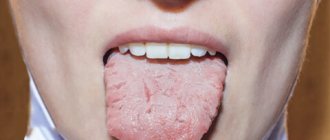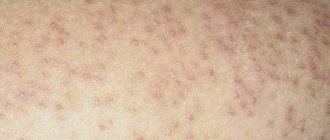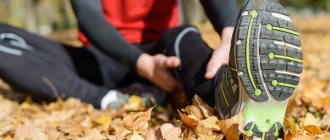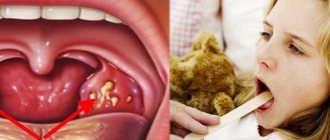A huge number of people, regardless of age, social status, habits and even health status, can experience such an unpleasant symptom as neck pain. Why does this happen?
Neck pain is an insidious symptom that can be serious, indicating active inflammatory processes or tissue destruction. Sensations of varying intensity are often accompanied by numbness in the back of the head, as well as loss of sensitivity in the hands, local redness and even swelling. Often with neck pain there is a headache and dizziness.
Determining the causes of neck pain is not easy. To accurately diagnose the problem, complex diagnostics are required, including computed tomography (CT), magnetic resonance imaging (MRI), as well as ultrasound (US) and laboratory tests.
Relief of neck pain is achieved using medications, as well as physiotherapeutic treatment methods.
general information
Pain radiating to the neck occurs in 70% of the adult population. Depending on many factors, sensations may vary in intensity and duration. Thus, even the same person can periodically experience both short-term discomfort and severe pain that worsens the quality of everyday life.
Often the pain is localized in the cervical spine, as well as along its anterolateral surfaces. Diagnosed cases indicate that more often patients experience a sharp “lumbago”, followed by severe discomfort.
The pain can radiate not only to the neck, but also spread to the shoulder, shoulder blade, occipital region and be of a different nature:
- throbbing;
- tingling;
- contracting.
In most cases, the pain intensifies when performing various head movements, which forces you to turn your entire body.
Classification
Depending on the duration of neck pain, there is an acute form lasting up to 10 days, and chronic cervicalgia, which can be constant or recurrent. In accordance with the etiopathogenetic classification, two forms of cervicalgia are distinguished:
- Vertebrogenic neck pain
. Develops as a result of primary damage to the osteochondral structures of the cervical spine. This group includes spondylogenic cervicalgia, associated with bone damage and compression of the spinal cord, and discogenic, caused by deformation of the intervertebral discs. - Nonvertebrogenic neck pain
. Includes all other causes of neck pain. Unpleasant sensations can occur due to inflammatory processes in the muscular-ligamentous apparatus, pathologies of internal organs - the pharynx, thyroid gland, lymph nodes and salivary glands.
According to localization, pain syndrome is distinguished in the front or in the lateral parts of the neck, in the area of the spinal column. Separately, a sore throat is isolated. Cervicalgia, which radiates to neighboring anatomical areas, is divided into cervicocranialgia (spread of pain to the occipital region) and cervicobrachialgia (cervicobrachial syndrome).
Structure and functional features of the cervical spine
The cervical region is the upper part of the spinal column (seven interconnected vertebrae), which bears a fairly large amount of load every day.
The joints connecting the vertebrae form the section of the spinal canal in which the spinal cord is located.
The cervical muscles are responsible for regulating the movements of the head and also allow it to be held in an anatomically correct position. Each muscle is attached to bones by strong connective tissue (tendons).
Having studied the structure, we can come to the conclusion that pain is provoked by pathologies of various types, the development of which is concentrated in any of the components of the cervical region of the musculoskeletal system.
Muscle pain
Spasms of the muscles of the neck and upper back occur due to injuries, physical strain during the day, in particular, incorrect postures, and emotional stress. Also, muscles can spasm due to an uncomfortable pillow. This condition usually manifests itself as pain and limited neck mobility. Within 6 weeks the pain goes away. To speed up the process, it is recommended to do special exercises, as well as eliminate the cause of muscle strain, if possible.
Classification of neck pain
Today, it is customary to distinguish several types of pain in the neck:
- cervicalgia – painful sensations of various types, having a different origin;
- cervicago or cervical lumbago - acute, sudden pain caused by compression of the nerve roots;
- cervicobrachialgia - pain that manifests itself and spreads as it grows to the upper limbs;
- Cervicocranialgia is a general condition in which neck pain and headache are felt simultaneously.
MBST therapy
This modern technique is used for joint pathologies to restore cartilage tissue and discs. The treatment mechanism is based on high-pulse magnetic resonance at the cellular level.
The procedure promotes:
- increasing the volume of cartilage tissue due to cell restoration;
- increased cartilage density due to increased collagen levels;
- relieving pain.
You can treat a hernia of the cervical spine in Moscow at ArthroMedCenter. MBST therapy will help eliminate pain and spasm, as well as the underlying causes of the disease.
Why does my neck hurt?
Among the causes of neck pain there may be a large list of diseases that have a similar list of clinical manifestations, but at the same time different mechanisms of progression.
Causes of sore throat
Most people immediately associate tickling and scratching with colds, however, with a number of diseases of this type, manifestations of such strength may be present that the patient may feel pain in the neck.
Severe discomfort and high rates of pain accompany conditions such as:
- laryngitis;
- viruses;
- bacterial infections;
- allergic reactions;
- foreign body in the tissues of the pharynx;
- vitamin deficiency, lack of microelements;
- reflux;
- malignant neoplasms.
Causes of neck pain in the front
Are the unpleasant sensations concentrated mainly in the front, under the chin? Such a limited area can tell a lot, because there are a large number of different types of tissues located here. If the discomfort increases when swallowing and turning the head, then among the reasons for this condition are:
- pathological processes,
- progressive in tissues
- thyroid gland;
- previous injuries;
- inflammatory processes of various types;
- purulent diseases;
- damage to tissues of the lymphatic system;
- respiratory diseases;
- angina pectoris.
Causes of pain in the cervical spine
If the patient’s complaints indicate discomfort on the back surface of the cervical spine, then there is a risk of diagnosing serious pathological conditions.
- In a situation of this kind, as a rule, there are “shots”, due to which the mobility of the head and even the shoulder girdle is sharply limited.
- Experienced sensations of this type indicate the presence of pathologies such as:
- destructive processes localized in vertebral tissues;
- injuries;
- damage to the ligamentous or muscular apparatus;
- development of infectious processes;
- the presence of vertebral anomalies.
Neck pain due to osteochondrosis
Special attention should be paid to one of the most common problems – neck pain due to osteochondrosis. Osteochondrosis is one of the most common pathological diseases on the planet.
Neck pain due to osteochondrosis is a serious symptom, and if you miss it, you can lose the opportunity for a full recovery, missing the initial stage of the development of pathological processes that can be treated.
Causes of side neck pain
Discomfort and severe pain, concentrated in the side of the neck, can migrate to the shoulder girdle or ear. An additional nuisance is tingling, pulsation and burning.
The most likely causes of pain in the side of the neck are:
- pathological processes of blood vessels;
- prolonged stay of the cervical spine in an uncomfortable position;
- muscle spasms;
- neoplasms;
- congenital pathologies;
- complications after illness or surgery.
Diagnostics
Patients who have neck pain on the side require an initial consultation with a general practitioner or traumatologist, then, according to indications, the person is referred to related specialists. A diagnostic search involves conducting modern instrumental imaging methods to determine the cause of pain and prescribing additional laboratory tests. The most informative are:
- Sonography
. Ultrasound of the cervical region is used to study the condition of internal organs, lymph nodes and endocrine glands. The study allows you to detect space-occupying formations, ulcers, and cysts. Additionally, an ultrasound of the abdominal organs is performed. - X-ray examination
. To exclude a vertebrogenic cause of neck pain on the right, an X-ray of the cervical spine is performed in frontal and lateral projections. If dislocations or traumatic injuries to the atlas are suspected, an image is taken through the mouth. - Examination of ENT organs
. Often, pain syndrome is caused by severe diseases of the respiratory tract, so pharyngoscopy and indirect laryngoscopy are necessary. If suspicious signs are detected, endoscopy of the larynx and pharynx is performed. - Neurological examination
. Pain in the neck area can be a consequence of pathological processes in the central nervous system, so superficial and deep tendon reflexes and coordination of movements must be studied. If necessary, a CT or MRI of the brain is done. - Blood chemistry
. The levels of acute phase indicators and the percentage of protein fractions are determined, which is necessary to exclude signs of the inflammatory process. Liver tests, pancreatic enzymes, and a complete blood count are assessed.
When ultrasound reveals large formations of the thyroid gland, a fine-needle biopsy of the node is required, followed by cytomorphological examination. Be sure to do a blood test for thyroid-stimulating hormones of the pituitary gland, T3 and T4, and parathyroid hormone. In some cases, duplex scanning of the neck vessels is required to assess the speed of blood flow. If it is suspected that the superior vena cava is compressed, radiography of the OGK is indicated to exclude mediastinal tumors.
When is it time to seek medical help for neck pain?
Often, a person experiencing pain in any spinal region prefers to refuse to visit a doctor and lets everything take its course. To prevent serious health deterioration, it is important to seek professional help in a timely manner.
Regardless of what type of neck pain is present, it is necessary to consult a specialist and determine the cause of its occurrence.
Special indications to pay attention to are:
- severe headaches;
- traumatic effects on the cervical spine;
- feeling of numbness, weakness in the limbs;
- ineffectiveness of drug use.
Ignoring the symptomatic picture can lead to irreversible consequences that seriously worsen the level of quality of life.
There are situations when a visit to the attending physician is required immediately. These usually include:
- increased body temperature, accompanied by pain in the neck and head;
- severe stiffness of the cervical spine (inability to reach the chest with the chin);
- presence of signs of a heart attack (chest pain, rapid breathing, increased sweating, nausea).
Types and causes of discogenic pathology in the cervical spine
Any problems with the integrity of the intervertebral disc with the contents moving beyond its boundaries is considered a disease. Protrusion and hernia form against the background of a critical increase in mechanical pressure on a certain area of the disc. As a result, the nucleus pulposus, located inside, protrudes. The nucleus puts pressure on the annulus fibrosus tissue, which can lead to its rupture.
Doctors distinguish the following stages of the disease:
- A slight protrusion of the disc without damage to the fibrous ring with a displacement of a maximum of 2-3 mm. The clinical picture is mild.
- Development of disc protrusion, which is accompanied by more pronounced protrusion of the pulp up to 3-5 mm. The patient begins to complain of periodic pain. Most often, the ability to work at this stage of the disease is preserved.
- The formation of the hernia itself, which is also called prolapse or extrusion. At this stage, the fibrous ring in the intervertebral disc ruptures with the pulp falling out beyond the boundaries of the disc tissue, for example, into the spinal canal. This is due to the localization of the damaged area.
- At the last stage of pathology formation, the prolapsed fragment of the nucleus pulposus is separated from the disc tissues with possible displacement under pressure. The separated element can move along the spinal canal. This leads to damage to the nervous structure and serious complications in the form of compression of the spinal canal. This condition is called sequestration.
Naturally, as the pathology progresses, each of the listed stages is not always observed. Sequestration develops quite rarely, although the mechanism of formation of the pathology is the same. In any case, the producing factor is increased pressure, leading to the destruction of the discs. This is most often associated with injuries, falling in slippery weather and hitting the head.
The most common cause of herniated intervertebral discs in the cervical spine is an accidental blow to the head in a low doorway. Healthy discs will not erode immediately. This will require prolonged exposure to negative factors or a sharp increase in pressure, for example, when hitting your head. This can cause a severe “explosive” fracture of the spinal elements in the neck, damage to the spinal canal, leading to disability of the patient.
Diagnosis of neck pain
To formulate a high-quality treatment plan for any disease, it is necessary to correctly diagnose it, taking into account all the patient’s complaints, existing medical history and the results of examinations.
Considering that the vast majority of cases are caused by pathological conditions of the spinal region, if you have neck pain, it is best to seek help from a chiropractor (osteopath), a vertebrologist or a neurologist.
The entire range of diagnostic procedures involves the use of instrumental and laboratory methods, each of which is aimed at visualizing the affected area and forming a high-quality basis for identifying the symptoms of concomitant diseases.
Let's consider the most informative diagnostic methods.
X-ray examination
Radiography is a key diagnostic method. Using the images obtained during the examination, you can evaluate the configuration of the vertebrae and form an understanding of the condition of the cartilage tissue.
Thanks to X-ray examination, pathological conditions such as:
- displacement of elements of the vertebral region;
- formed hernias and other neoplasms;
- extensive growth of bone tissue, etc.
X-ray images display all the information necessary for diagnosis, which allows the specialist to formulate an accurate diagnosis and determine key areas of treatment.
However, there are cases when radiography is not enough to identify a number of pathologies. Sometimes it is completely unavailable due to contraindications. In this case, other solutions come to the rescue.
Magnetic resonance imaging (MRI)
An MRI examination involves obtaining a three-dimensional image in several projections, which makes it possible to assess the condition of all types of tissues of the cervical spinal column.
Functional diagnostics
Due to the fact that one of the causes of pain in the cervical spine is muscle spasms, it is appropriate to talk about the probable damage to this type of tissue.
In order to identify lesions and their extent, methods such as electromyography are used (determining the level of bioelectrical activity and the ability of nerves to transmit impulses).
Electroneurography (recording of an electrical signal as it propagates along the nerve being examined) and Forestier's test (detecting the ability to take an anatomically correct position) are also used.
Laboratory blood test
The results of a general and biochemical examination of biological fluids (blood, urine) indicate or refute the presence of inflammatory processes, which are the causes of pain.
In laboratory diagnostics, special attention is paid to the concentration of hormones.
Additional studies are considered to be bacteriological culture of sputum and throat smear.
Risk factors for exacerbation
The formation of an exacerbation during protrusion and hernia in the cervical spine is most often observed against the background of:
- Poor posture, stooping, flat feet or walking in uncomfortable shoes. The spinal column has a powerful compensating mechanism that protects the brain from shock during walking and running. However, any uncompensated shock is transmitted upward with amplification. The occurrence of the greatest amplitude and traumatic potential is observed at a considerable distance from the place where the vibration is localized. As a consequence, poor posture, dehydration in the intervertebral discs with possible destruction form in the cervical region.
- Tonic tension in the deep muscles of the dorsal and cervical region, which is accompanied by muscle spasm with the formation of a protective posture. Due to the increased load on the head and neck muscles caused by wearing high hairstyles in women and heavy winter fur hats, blood circulation in the muscle tissue of the cervical region is impaired. As a result, the nutrition of the intervertebral discs deteriorates and their tissues become dehydrated.
- Over time, osteochondrosis develops and progresses, and osteophytes appear on the elements of the spine. This causes poor blood circulation and the development of muscle spasms with limited motor function in the neck.
As a result, a rapid increase in pressure on the spinal tissue leads to its transmission to the intervertebral disc. Against the background of uneven, eccentric and undistributed pressure, a destructive process in the disc begins. This provokes the formation of a protrusion or a hernia itself.
Treatment for neck pain
Regardless of the nature of the pain experienced, its elimination and treatment of the root causes should be handled exclusively by a doctor. It is important to remember that the lack of treatment or the use of inadequate therapy (self-medication) sooner or later leads to a worsening of the pathological condition and irreversible consequences (from loss of mobility to death).
What to do before diagnosis?
Having neck pain? You should not delay your visit to the doctor. However, if the diagnosis has not yet been established, and the pain is in no hurry to subside, you should know how to deal with it.
First of all, in order to limit yourself from the likelihood of such an unpleasant syndrome, you should avoid excessive sharpness in movements, and also take care of protection from drafts and hypothermia.
If pain has already appeared and the discomfort is only increasing, it is permissible to take analgesics once. IMPORTANT! The drugs should not be taken for a long time without a doctor's prescription.
Methods of conservative therapy
The initial stages of any disease are eliminated by conservative treatment methods, which usually include drug therapy.
In order to relieve the sensations experienced, as well as eliminate pathological processes, drugs of various pharmacological groups are used, which include:
- non-steroidal anti-inflammatory drugs (NSAIDs), which eliminate inflammation and relieve unpleasant syndrome;
- muscle relaxants that relieve muscle spasms;
- anesthetics that relieve pain;
- antibiotics, the action of which is aimed at eradicating bacterial and purulent processes;
- vitamins and minerals used to support the level of nutrients in the body;
- chondroprotectors that help accelerate regenerative processes in articular tissues.
It is worth noting that drugs from the chondroprotector group are especially important at the stage of eliminating pathological conditions of the musculoskeletal system. The drug “Artracam” is considered to be one of the most effective and affordable solutions.
Physiotherapeutic treatment as a method of eliminating neck pain
The best activator of conservative methods is a complex combination with physiotherapeutic treatment.
Methods such as:
- mud baths and heat compresses;
- electrophoresis using anesthetic drugs;
- manual therapy;
- exposure to magnets or needles;
- visiting a massage;
- use of complexes of therapeutic physical culture.
Surgical intervention
When diagnosing pathologies of the spinal column, accompanied by pain localized in the cervical region, radical treatment methods may be required.
In order to reduce excessive pressure on the nerve roots, discectomy (open surgery to remove a hernia), foraminotomy (a minimally traumatic procedure aimed at decompressing the nerves) or laminectomy (a neurosurgical operation designed to relieve compression) is used.
In particularly difficult cases with severe degenerative lesions, spinal fusion (artificial fusion of the vertebrae for the purpose of their targeted immobilization) may be required.
Therapy methods
Typically, patients diagnosed with cervical intervertebral hernia suffer from the pathology for more than one year, and exacerbations and remissions are regularly observed. Often, painful sensations weaken over time or disappear on their own a couple of weeks after a subsequent exacerbation.
Conservative methods of therapy will not help to completely get rid of the problem; it helps to cope with the consequences of the hernia’s impact on the soft tissue, muscles and nerve endings. Often, as a residual phenomenon, the presence of a vegetative reflex effect on the tone of vascular tissue - neurovascular symptoms - is observed.
Complex therapy involves taking the following pharmaceuticals:
- non-steroidal anti-inflammatory drugs (COX-2 inhibitors);
- muscle relaxants with central action;
- As auxiliary methods, medicinal electrophoresis using vitamins and aminophylline is prescribed.
When the exacerbation subsides, the use of physiotherapeutic procedures is indicated. To activate blood circulation in muscle tissue, it is recommended to perform physical therapy and massage of the cervical-collar region (movements must be extremely careful).
Treatment of cervical intervertebral hernia with relatively crude methods, such as manual therapy, traction, can cause a significant aggravation of the condition. This will lead to the development of serious negative consequences.
As an emergency measure, it is recommended to wear a Shants collar if pain occurs. The device is used to support the head and helps prevent sudden bending and turning of the head, which can lead to the development of compression symptoms and sometimes fainting.
After the collar is applied, it is better to immediately consult a neurologist and have an MRI of the neck performed; then you may need to consult with a neurosurgeon. This will help to assess the possible risk for a similar location of the pathology and determine the choice of treatment regimen.
Prevention of neck pain and musculoskeletal disorders in general
Anyone who has ever encountered the problem under consideration has repeatedly asked the question: “What methods of struggle exist?” First of all, it is worth noting that the best treatment at all times is considered to be prevention, which consists of creating optimally comfortable conditions for the functionality and nutrition of the human spinal column.
It is important to create such conditions, the observance of which will not just be continuous, but literally for life. This is precisely the secret of the success of preventive measures.
There are several components to preventing neck pain. Let's look at each of them.
Physical activity and sports
A key component in preventing destructive processes in the musculoskeletal system. Moderate exercise helps maintain optimal health.
Workplace safety
The ergonomics of working conditions largely determines the state of human health, because people spend quite a lot of time at the workplace.
If it is impossible to organize comfortable conditions, then you must at least strive to systematically relieve tension by systematically performing simple warm-up exercises.
Special diet
The lack of useful vitamins and minerals negatively affects the condition of the skeleton of the human body. In order for the tissues to have everything they need, it is important to ensure rational nutrition.
The daily diet should be moderately enriched with sources of not just energy, but also vitamins and microelements.
Don't forget about your drinking regime. To ensure the required level of metabolism, you need to drink 1.5 to 2 liters of clean water per day.
Taking chondroprotectors
The use of preventive courses of taking chondroprotectors helps maintain the optimal condition of articular tissues, and also allows you to accelerate regenerative processes when they are damaged.
Preference should be given exclusively to reliable drugs that have proven themselves in the modern pharmacological market.
One of the most effective is considered to be “Artracam”. Do you want to enjoy a full life? It's time to start preventing ODA diseases today. By adhering to the principles of maintaining your own health, you can forget about feeling unwell and enjoy all the benefits
Features of therapy
The main question for patients is what to do if the neck hurts on the right side, how to treat such pain and how to get rid of its causes? There are several methods of therapy.
Medication
To treat neck pain, various medications are used that have analgesic and anti-inflammatory effects. These can be tablets or gels (ointments). To suppress severe pain syndromes, injections are used that have a chondrostimulating, blocking pain impulse transmission and anti-inflammatory effect.
Manual therapy, massage
Manual therapy and massage have a beneficial effect on the movement of blood in the vessels, on the condition of muscles and bone tissue. There are acupressure, reflex-segmental, hardware, etc. massages.
Gymnastic exercises
Special gymnastic exercises can be prescribed both as prevention and as part of treatment. As a rule, the complex includes simple exercises (turns, tilts of the head, and similar actions) aimed at developing muscles.
Traditional methods
Even with the active development of medicine, folk remedies for treating diseases continue to be popular among many patients. Why not if it really has an effect? Various compresses can be used as treatment - from cabbage leaves, vodka and honey, horseradish. Homemade ointments are also used, which may include coltsfoot, parsley, apple cider vinegar and other components. It is worth noting that self-medication, even using folk methods, is unacceptable. Any therapy must be coordinated with your doctor. For example, compresses cannot be used for inflammatory and infectious diseases, as they can only provoke an even greater development of the disease.
Prevention
To maintain good health after treatment, the patient should take the following preventive measures.
Prevention helps avoid relapse
- Exercise. Running, walking, swimming are just a couple of examples of sports disciplines that can help improve well-being and maintain proper function of the neck muscles.
- Physical exercise. Exercising in the morning, warming up before, during or after work - all this is also extremely beneficial for the neck and head.
- Maintaining correct posture. With correct posture, the work of the brain and neck muscles proceeds normally, and the person feels good.
- Change your diet. Add fatty fish, vegetables, fruits and dairy products. Remove smoked, salty and spicy foods, as well as chocolate, nuts and coffee.
- To refuse from bad habits. Smoking and alcohol have a destructive effect on the body. Getting rid of them significantly improves your health.
These measures, when carried out carefully, help maintain the good condition of the body.
Treatment
Having found out the cause of the pain in the head and neck, the doctor prescribes a course of treatment for the patient. It is based on the diagnostic results, structural features of the body, and the patient’s condition at the time of the examination.
Treatment of pain in the head and neck requires certain measures
It may include the following items:
- taking medications;
- physiotherapeutic procedures;
- sport.
Below these points will be discussed in detail.
Medicines
Conservative treatment always begins with taking medications. For pain in the neck and head, doctors prescribe medications, the choice of which depends on the root cause of the pain.
For example, the most effective medications are:
- "Diclofenac";
- "Ibuprofen";
- "Ketoprofen";
- Meloxicam.
Medicines always help to cope with head and neck pain
If, in addition to pain in the head and neck, there are problems with the intestines, then the following medications are prescribed:
- "Diacerin";
- "Aceclofenac";
- "Celecoxib."
For persistent pain, the following is prescribed:
- "Flupirtine";
- "Carbamazepine";
- "Pregabalin".
To protect the nervous system, the doctor says to take the following vitamins:
- "Milgamma";
- "Berocca".
Medicines, when taken correctly, relieve pain in the head and neck within a short time.
Interesting! For neck and head pain caused by stress and bad emotions, painkillers most often do not help the patient. For this reason, doctors prescribe antidepressants and sedatives. Among them may be Corvalol, Valocordin, tinctures of motherwort and valerian, etc.
"Ketoprofen"
Folk remedies
Treatment of pain in the neck and head with folk remedies is useful for humans, since various decoctions and tinctures are prepared based on plants. Both adults and children can take them.
Below are several recipes for potions that can help solve the problem of neck and throat pain.
Recipe No. 1. Medicine made from apple (grape) vinegar.
Ingredients:
- Apple (grape) vinegar – 2 tablespoons.
- Cotton fabric – 1 pc.
- Water – 1 l.
What to do: first add vinegar to cool water, then wet a cloth and apply it to your feet. Hold for 5-10 minutes. Oddly enough, this method helps get rid of headaches. You can also apply a dampened cloth to your temples.
Recipe No. 2. Medicinal gruel
Ingredients:
- Garden parsley - a bunch.
- White lily - a pinch.
- Lemon (with peel) – a quarter.
- Honey - 1 tbsp. l.
What to do: throw a bunch of parsley, a pinch of white lily and lemon into a blender. Grind. Bring to a paste. Pour in honey. Place in a dark and cool place for a week. Take 2 teaspoons before meals.
Folk remedies are remarkably helpful in the fight against this disease.
Recipe No. 3. Mint infusion.
Ingredients:
- Mint leaves – 1 spoon.
- Boiled water – 300 ml.
What to do: add mint leaves into a cup, then pour boiling water over it. Leave for several hours. Then strain and drink 2-3 glasses a day.
Recipe No. 4. Lavender decoction.
Ingredients:
- Dry lavender – 2-3 spoons.
- Boiled water – 0.5 l.
What to do: pour lavender inflorescences into a glass, fill it halfway with boiling water and leave for a quarter of an hour. This decoction relieves pain in the back of the head and is considered the best dehydrative. Drink up to four times a day.
Recipe No. 5. Baths with pine needles.
Ingredients
- Needles.
- Water.
What to do: fill the needles with water and boil for a third of an hour. After this, wrap the resulting broth and leave for half a day.
How to take: on average, one bath requires about one and a half liters of decoction. After adding it to warm water, you need to lie in it for about half an hour. The bath is known for its pain-relieving and relaxing effects. It should be taken every day in the evening or every other day. At the end of the procedure, take a shower and wipe the body dry. Course – twenty baths.
Physiotherapy
Physiotherapeutic devices
To treat pain in the head and neck, doctors recommend undergoing physiotherapeutic procedures that are aimed at getting rid of the root causes of the disease.
Doctors recommend the following procedures:
- manual therapy;
- ultra-high frequency therapy;
- therapy using sinusoidal simulated currents;
- massotherapy;
- acupuncture.
Physiotherapy can speed up recovery
Before starting a course of physiotherapeutic procedures, the doctor will study the anatomical and physical characteristics of the patient and take into account contraindications. This is required to ensure that the treatment is not harmful to health.
Exercises
Treatment of pain in the neck and head, in addition to medications, folk remedies and physiotherapeutic procedures, includes physical exercise.
For example, to restore blood circulation in the neck and relieve pain, most people only need to perform two light exercises. They can be easily done at home as they do not require any equipment.
Exercise to increase neck mobility
The first neck pain relief exercise will help restore neck mobility. It also directly contributes to improving a person’s condition by relaxing muscles and relieving pain.
Steps to perform the exercise.
- Wrap a towel around your neck.
- Take the right side of the towel with your left hand, and the left side with your right.
- Raise your front hand so that the towel is at the same height as your cheek.
- At this height, you need to pull your head to the side with your hand and a towel. Do this 10 times.
- Change hands.
- After completing this, you need to grab the towel with both hands and pull its ends up. At this time, the head tilts back and the gaze is directed upward.
You need to do this entire exercise twice a day - morning and evening.
Important! In the first days of performing this exercise, the muscles will be very sore, but then the discomfort will decrease and the tension will subside.
Neck muscle stretching exercise
The second exercise is designed to stretch the neck muscles. The main focus is on the trapezius muscle, problems with which become the main cause of headaches.
Steps to perform the exercise.
- Place your hands on your head.
- Tilt your head to the side. When bending, support your hand.
- After bending over, turn your head to the side. At this point, the trapezius muscle will stretch.
- Fix in this position for ten seconds. You need to do the exercise three times in each direction.
This exercise should be repeated twice a day.
As a rule, these two exercises are enough to get rid of neck and head pain, as well as stiff neck muscles.
However, in order to maintain the improvements made through exercise, you need to get rid of all the risk factors that caused the disease. Otherwise, the pain will return very soon.
Exercises help restore neck condition and improve overall well-being
Exercise to improve posture
One of the things you can do to relieve neck and head pain is to improve your posture.
In more detail, incorrect posture and posture create conditions when the neck muscles must overstrain to prevent the head from tipping over. This leads to pain and discomfort.
By regularly performing the following exercise, the patient can quickly correct his posture and get rid of pain in the back, neck and head.
Steps to perform the exercise.
- Starting position – feet shoulder-width apart, standing firmly on a support.
- Bend your knees slightly.
- Pull in your stomach.
- Straighten your chest and push it forward.
- Head up. Fix in this position for 30 seconds and repeat 10 times with breaks of 10 seconds.
At first there will be a strange feeling because the body will tell you that this is wrong. But after two weeks of practice, the patient will feel much easier. Also, in the first days, doing the exercise will be tiring, but this will also pass with time.
Prices for posture trainers, hanging horizontal bars, gymnastic boards
Exercise to relieve neck and head pain
To solve the problem of neck and head pain, it is necessary to restore the mobility of the upper neck.
This can be done thanks to the following exercise, specifically designed for this.
Steps to perform the exercise.
- Place the towel at the level of the back of your head.
- Hold both ends of the towel in front at a horizontal level.
- Pull the towel forward.
- At the same time, point your chin closer to your neck.
- Maintain this position for five seconds.
- Repeat this action ten times.
Do this exercise twice a day. Over time, neck mobility will increase and the headache will disappear.
For greater effectiveness, this exercise can be performed in combination with those previously described.
Orthopedic devices
To support the neck and improve its condition in case of cervical osteochondrosis, doctors prescribe wearing a neck brace (Schanz splint) or a cervical collar (Philadelphia collar).
They create relief for tense neck muscles by fixing and limiting movement. This helps you recover faster during treatment for neck and head pain.
Orthopedic devices can greatly help in the fight to improve health
For each patient, they are selected in size and shape for effective use. In the future, if symptoms of cervical diseases recur, the neck brace or collar can be used again.
The duration of wearing is determined by the attending physician. They depend on the patient’s condition at the time of starting to wear the orthopedic device. On average, it lasts from several days to several weeks or months.
First aid
It is impossible to undergo complex treatment at home. However, there are several ways to reduce pain before consulting a doctor:
- over-the-counter painkillers - Analgin is available in any pharmacy and in your home medicine cabinet;
- massage of the neck and head area - effective for muscle spasms, it can be performed independently;
- warm bath – relaxes muscles, improves blood circulation and relieves spasms.
If the tissues around the painful area are swollen, redness of the skin and an increase in its local temperature are observed - massage and thermal procedures are contraindicated. In this case, it is enough to take a painkiller and make an appointment with a doctor.
First actions
What to do if there is pain in the head and neck? Before you see your doctor, you can try the following:
- Open the windows and ventilate the rooms. The fact is that lack of oxygen also often causes headaches.
- Go for a massage. The main thing is to pay attention to the neck, back of the head and shoulders.
- Lie on your back. The surface must be hard. You need to “stretch” and relax.
- Any bad thought must be driven away. This will help you relax faster.








